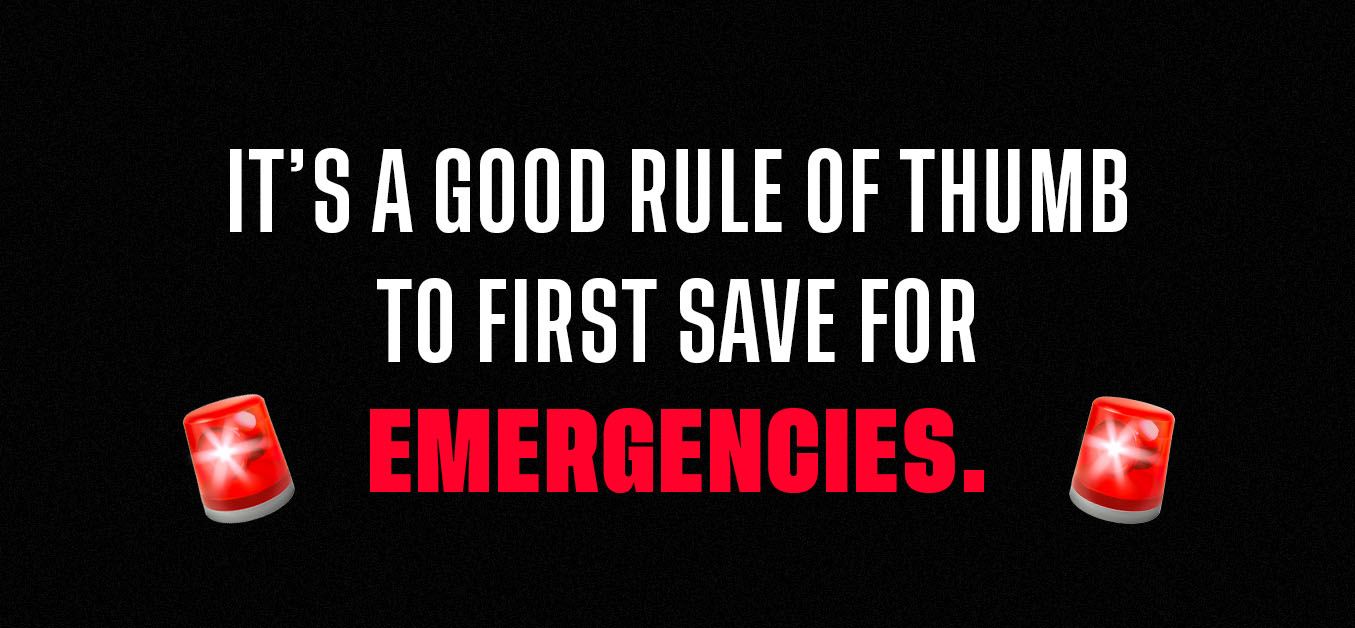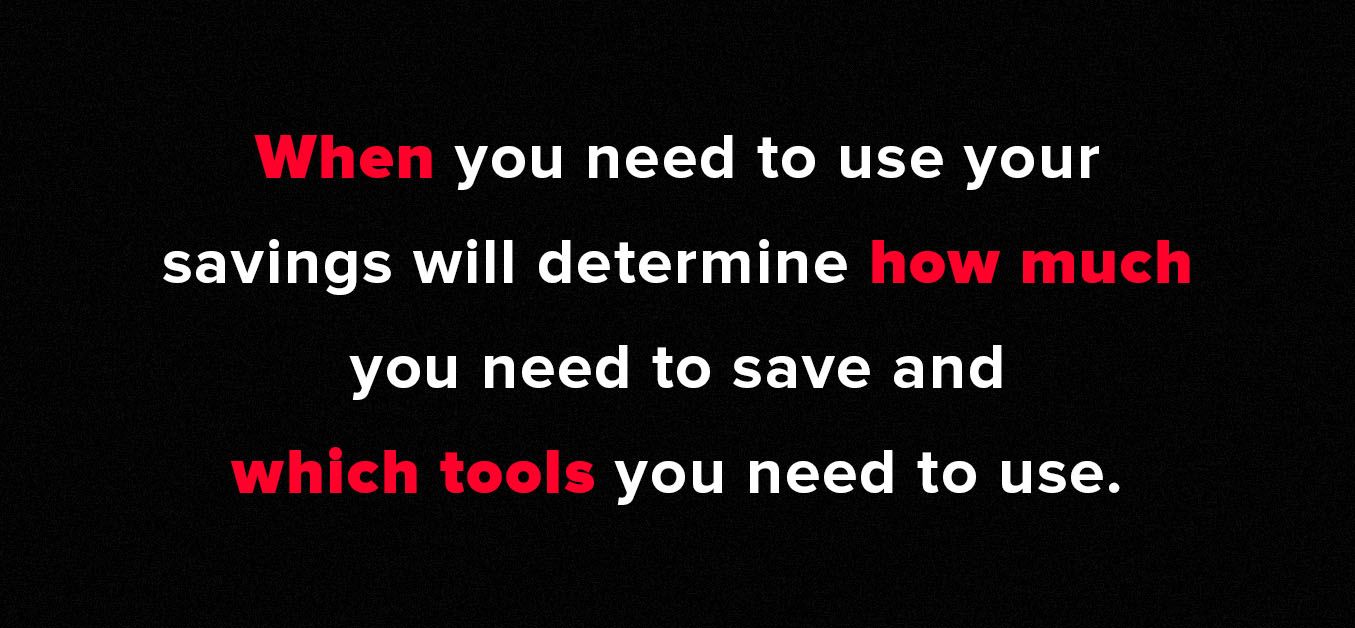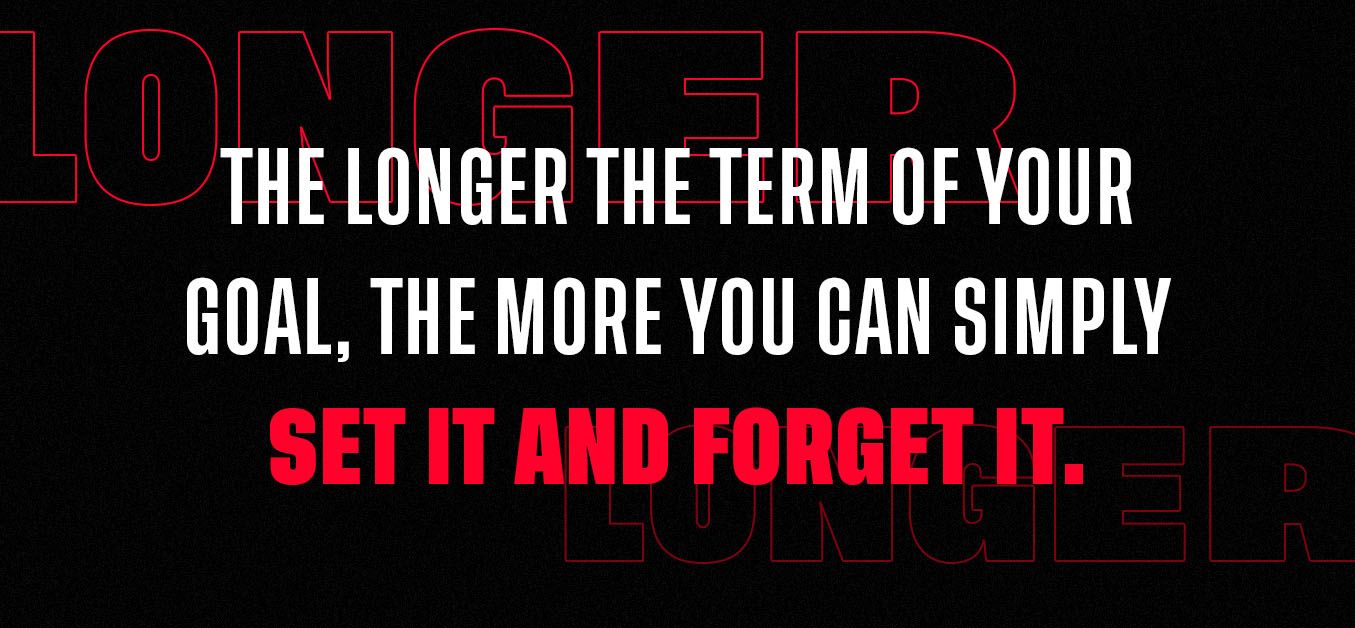How to Prioritize Your Saving Goals
A down payment or a new car: which takes priority in your savings plan?
Canadians often have complicated, even competing, financial goals.
Saving for retirement, a down payment, this year’s vacation and another outrageously small bottle of Supergoop’s Unseen Sunscreen? Same! We believe in UV protection in this household!
Struggling to do any of these things efficiently? Same.
Assigning priority to our savings goals—and designing saving strategies to complement this priority—is no easy task. But it’s necessary if we want to reach our goals as quickly as we can. Here are a few tips to help along the way.
How to Prioritize Your Saving Goals
For the purposes of this article, we’re assuming that you don’t have any debt to pay off. If you do—which is normal!—check out this article on when you may want to be aggressive in paying down debt, or when you may want to take it (reasonably) slow.
Our Legal Eagles would also like us to remind you that this isn’t advice, and you’ll have to make your own decisions based on your own research and circumstances. That’s the smart thing to do anyways—you know your finances best!
Determine the Cost of Your Goals

The first step? Figure out the cold, hard facts.
Want a new car? What is it actually going to cost you—payments, interest, insurance and all?
Maybe you want to go on vacation. Think big picture: a trip to Paris is going to cost more than just a plane ticket, hotel, and a pass to the Eiffel Tower. You’re going to need transit fare, a budget for dining out, and probably some spare change for souvenirs.
What about purchasing a home? Maybe as a first time home buyer, you’re eligible to purchase a home in Canada with only 5% down. But is that worth it? You may be charged more in interest over time, or face greater penalties if you default on your payments. Is it actually cheaper to purchase with 10% down?
Once you’ve got the figures—and be realistic here!—you’re ready to start prioritizing.
Rank Your Goals Based on Necessity

Next, think about necessity.
It’s a good rule of thumb to first save for emergencies. If you don’t have an emergency fund, you’re vulnerable to sudden expenses like a broken down car, a leaky roof, or even medical bills. Saving this lump sum first enables you to quickly get onto your real savings goals—with added peace of mind!
Then, thin the herd. Do you really need to go to Paris this year? Honestly—what about next year?
Ranking your goals by necessity is not intended to suck the fun out of your goals. But it's a simple fact that dividing your income up into several portions for several savings goals will slow down your progress on all of them.
So, try asking yourself: do I need a new car right now? Yes? Maybe I should move the Paris trip to next year and double down on buying a new car sooner.
Set Deadlines For Your Savings Goals

This tip is probably the most important when it comes to prioritizing your savings goals—and deciding which strategies to use to reach them.
The idea is simple: when are you going to need this money? The answer to this question will determine how much you need to save and which tools you need to use.
If you’re saving to replace the transmission of the car you use to get to work everyday, you would probably want to allocate as much money as you can to this short term goal. This might look like re-allocating money from elsewhere in your budget to increase the amount you can contribute this month, growing your principal savings balance.
If you’re saving for a down payment on your first home, by contrast, you’re probably looking at a couple years of focused, consistent saving.
In this case, it probably doesn’t make sense to save every single spare penny, leaving no funds for fun, vacations, or other “wants”. You still need to be able to live your life. Instead, you might consider opting into a Tax Free Savings Account which you use to invest into low cost exchange-traded funds. Investing your savings—even over the course of five or six years—can really contribute to its growth.
Meanwhile, your retirement fund is also a different beast. If you’re retiring in 40 years, you’re probably going to be counting on the magic of compound interest. It probably doesn’t make sense, therefore, to pour *every* *single* *dollar* into your retirement savings starting today.
Instead, you may want to find a reasonable percentage of your income to contribute every single month. But because you’re on a much longer timeline, this amount might be lower than what you’d contribute to a medium term down payment savings account or a short term car repair account.
Saving is About Strategy

To summarize, short term savings goals are the least able to take advantage of amazing mechanisms like compound interest, and as such, these probably need more capital contributions up front. The longer the term of your goal, the more you can simply set it and forget it.
Using these tips and your budget, you can figure out how much money you should be directing into which savings account every month. As always, consistency is key. But being thoughtful about your savings strategy and accurately prioritizing your savings goals is a close second.
If you don’t have a budget yet, check out our 50/30/20 Budget, which we love.
| GET MY FREE MOGOCARD |
You got this!
This blog is provided for informational purposes only, is not intended as investment advice, and is not meant to suggest that a particular investment or financial strategy is suitable for any particular investor or individual. If you’re unsure about an investment or saving strategy, you may wish to obtain advice from a qualified professional.
*Trademark of Visa International Service Association and used under licence by Peoples Trust Company. Mogo Visa Platinum Prepaid Card is issued by Peoples Trust Company pursuant to licence by Visa Int. and is subject to Terms and Conditions, visit mogo.ca for full details. Your MogoCard balance is not insured by the Canada Deposit Insurance Corporation (CDIC). MogoCard means the Mogo Visa Platinum Prepaid Card.